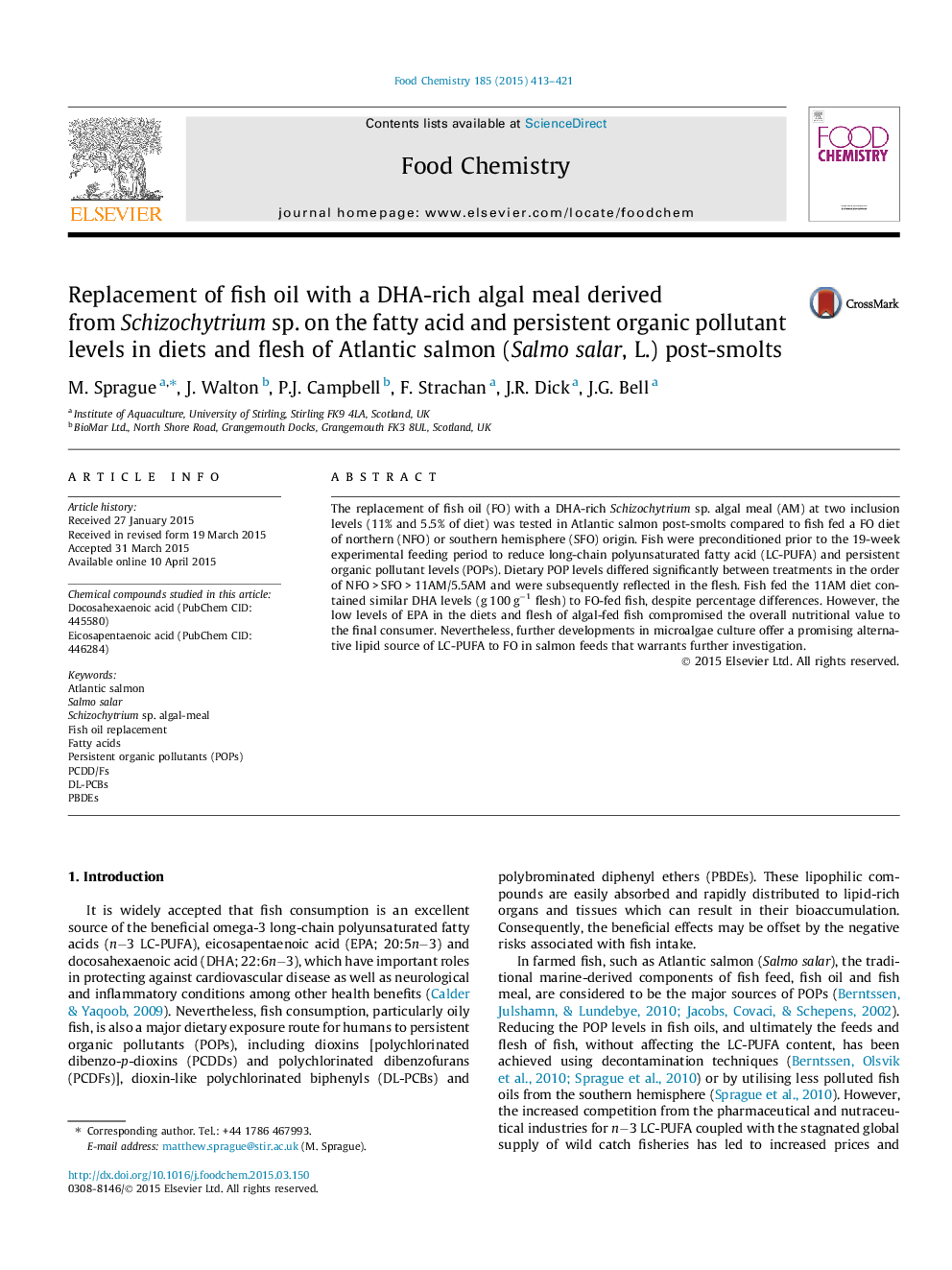| Article ID | Journal | Published Year | Pages | File Type |
|---|---|---|---|---|
| 7591807 | Food Chemistry | 2015 | 9 Pages |
Abstract
The replacement of fish oil (FO) with a DHA-rich Schizochytrium sp. algal meal (AM) at two inclusion levels (11% and 5.5% of diet) was tested in Atlantic salmon post-smolts compared to fish fed a FO diet of northern (NFO) or southern hemisphere (SFO) origin. Fish were preconditioned prior to the 19-week experimental feeding period to reduce long-chain polyunsaturated fatty acid (LC-PUFA) and persistent organic pollutant levels (POPs). Dietary POP levels differed significantly between treatments in the order of NFO > SFO > 11AM/5.5AM and were subsequently reflected in the flesh. Fish fed the 11AM diet contained similar DHA levels (g 100 gâ1 flesh) to FO-fed fish, despite percentage differences. However, the low levels of EPA in the diets and flesh of algal-fed fish compromised the overall nutritional value to the final consumer. Nevertheless, further developments in microalgae culture offer a promising alternative lipid source of LC-PUFA to FO in salmon feeds that warrants further investigation.
Keywords
Related Topics
Physical Sciences and Engineering
Chemistry
Analytical Chemistry
Authors
M. Sprague, J. Walton, P.J. Campbell, F. Strachan, J.R. Dick, J.G. Bell,
